The Viennese-born painter Vito Timmel (Vienna, 1886 - Trieste, 1949), but a Triestine by adoption, since he moved there with his family at a very young age, bequeathed as many as thirteen canvases to the Euripides Theater in Panzano, a district of Monfalcone. Unfortunately, however, the theater was greatly damaged by World War II bombing and was completely demolished to build structures for the shipyard. But what happened to Timmel’s canvases? Today they are preserved in the Monfalcone-MuCa Shipbuilding Museum. In fact, with great surprise, it was only in the year 2000 that it was discovered that those paintings were still intact, but with a story to tell: Timmel’s works were found on the top floor of the building where xylographer Tranquillo Marangoni’s studio and photographer Giovanni Cividini’s studio were formerly located. It was thanks to Marangoni’s son, Paolo, that the canvases were made visible to the citizens of Panzano once again, as he purchased them and made their restoration possible. Incidentally, the certainty that these were indeed the canvases destined for the town theater came from the photographs Cividini had taken inside the newly constructed building, which testify to the arrangement of the canvases in the theater made between 1920 and 1921.
These, in keeping with the setting for which they were intended, depicted characters from the theatrical and literary world, including Columbine, Harlequin, Juliet, Cyrano, Salome, a clown , an acrobat and many others. Above each of them were the names of some of the most famous writers and literary figures who presented connections with the figures below: Carlo Goldoni, Gabriele D’Annunzio, William Shakespeare, Oscar Wilde, Victor Hugo, Gustave Flaubert. Completing the cycle are the great caricature masks of Tragedy, Scherzo, Drama, Comedy. Paolo Marangoni had the opportunity to return twelve of the thirteen canvases to the citizenry, since the last one, believed lost, was recently found: this one depicted Franc and Francesca; the former is the Duke of Reichstadt, son of Napoleon I, from Edmond Rostand’s opera L’Aiglon, the latter is Francesca da Rimini the protagonist of a tragic opera by D’Annunzio.
As previously stated, Timmel’s canvases are on public view in Room 13 of MuCa, commemorating the decorating artist and, of course, the lost Euripides Theater in Panzano. Works that areinfluenced by the Viennese, Secessionist style, well evidenced in the figure of Helena, andexpressionism, whereby the characters take on a caricatured appearance.
 |
| Vito Timmel’s canvases. Ph. Credit Massimo Crivellari |
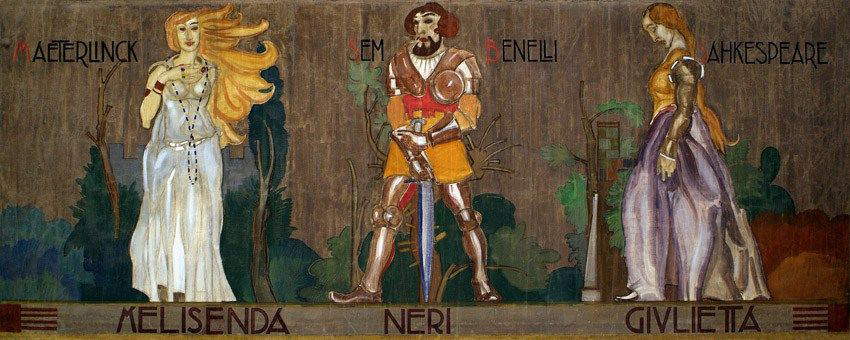 |
| Vito Timmel’s canvases. Ph. Credit Massimo Crivellari |
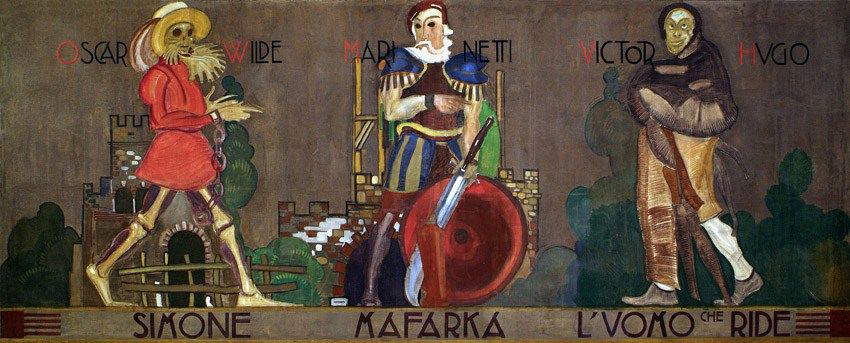 |
| The canvases of Vito Timmel. Ph. Credit Massimo Crivellari |
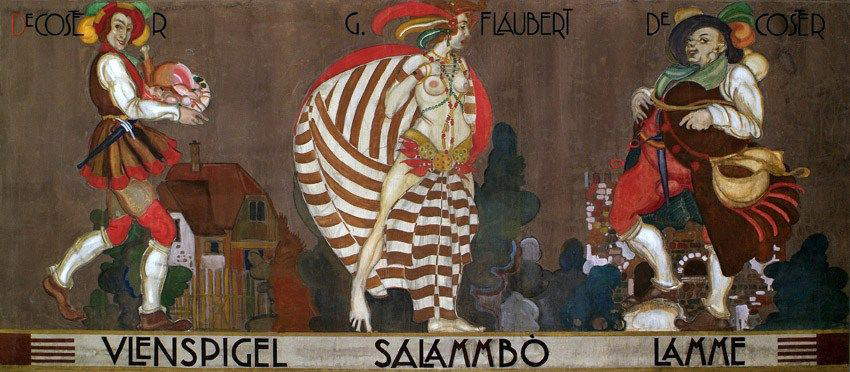 |
| The canvases of Vito Timmel. Ph. Credit Massimo Crivellari |
 |
| Monfalcone Shipbuilding Museum, The Panzano Theater: the canvases of Vito Timmel. Ph. Credit Massimo Crivellari |
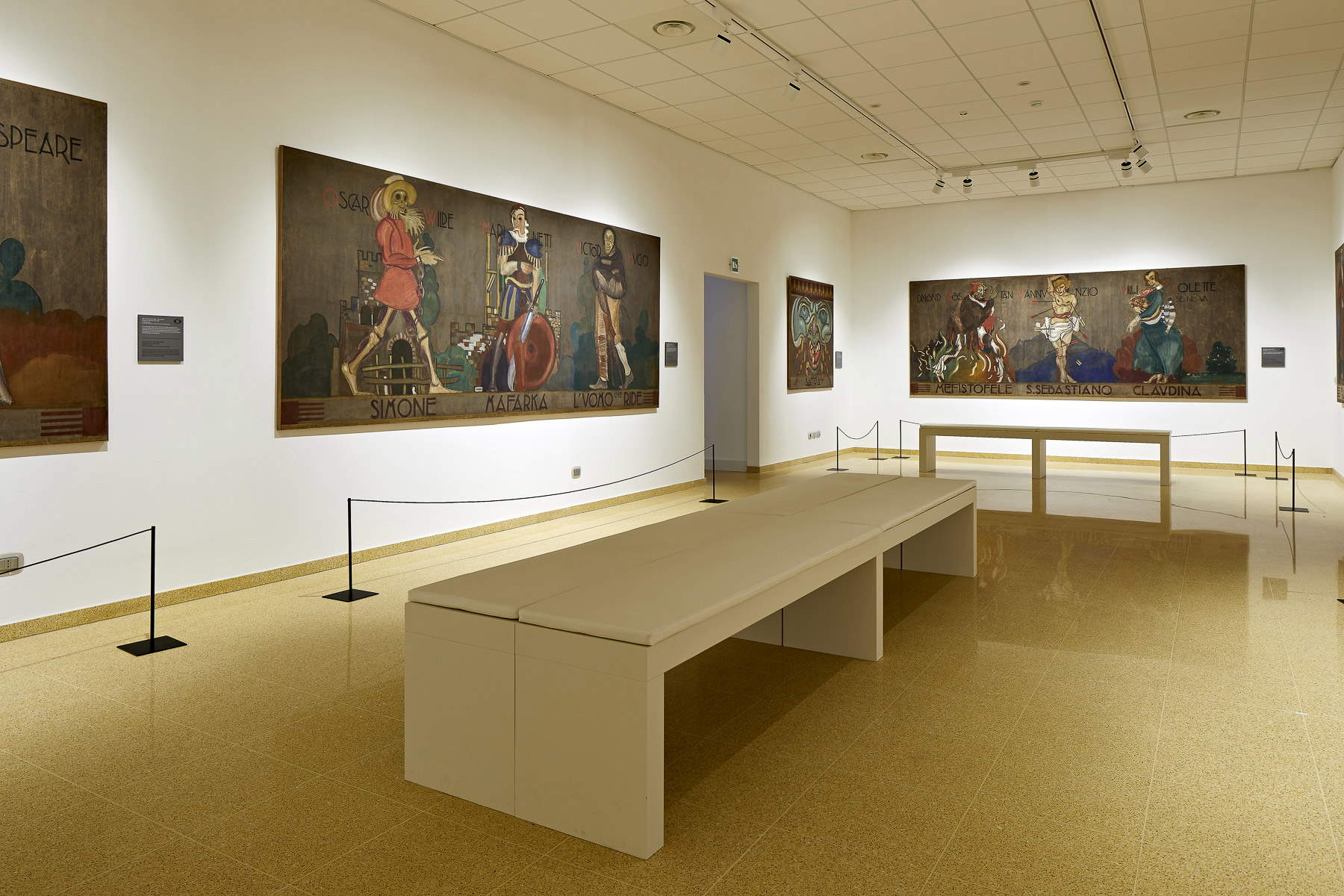 |
| Monfalcone Shipbuilding Museum, The Panzano Theater: the canvases of Vito Timmel. Ph. Credit Massimo Crivellari |
Among the other works preserved at MuCa, precisely in room 10, is the embroidered panel by Slovenian artist ZoranMušič (Boccavizza, 1909 - Venice, 2005), made in 1951 and intended for the first-class lounge of the motor ship Augustus. At nine meters in length, the splendid work was granted on deposit by the National Gallery of Modern and Contemporary Art in Rome. In 2016, the exhibition Imaginary of Travel had been mounted at the Municipal Gallery of Contemporary Art in Monfalcone. ZoranMušič and Tranquillo Marangoni on the motor ships Augustus and Giulio Cesare, at which the large tapestry entitled The Voyage of Marco Polo by Muši? and the sketch of Around the World in 80 Days made by Marangoni for the first-class bar of the motor ship Giulio Cesare had been exhibited. A review aimed at emphasizing the close relationship these artists had with the ships of the shipbuilding environment. A bit like what happens in the MuCa exhibition route, in which Vito Timmel’s canvases and Muši?’s embroidered panel were placed in dialogue with the particular museum venue.
The Monfalcone Shipbuilding Museum occupies the first floor of theformer PanzanoWorkers’ Hotel, a village developed around the shipyard in the 1920s by the Cosulichs, the first owners. The complex could be called a remnant of industrial archaeology, because through the Albergo operai and, especially through theentire workers’ quarter where the old stores stood, it is possible to understand the daily life of workers in the era of the second industrialization: it is a clear example of a planned neighborhood.
TheWorkmen’s Hotel was built to the design of engineer Dante Fornasir to allow unmarried workers who worked in the shipyard and did not reside in Monfalcone to stay for a fee near their place of work. There were seven hundred rooms as small as cells and five inner courtyards; inside the building then were a canteen, a bar, a game room, an exercise room, a library, a cobbler’s shop, and a barber shop. During World War II it was almost destroyed by bombing and only in 2010, thanks to the Monfalcone Shipbuilding Museum Pole project and the contribution of the Autonomous Region of Friuli Venezia Giulia, was it restored and upgraded.
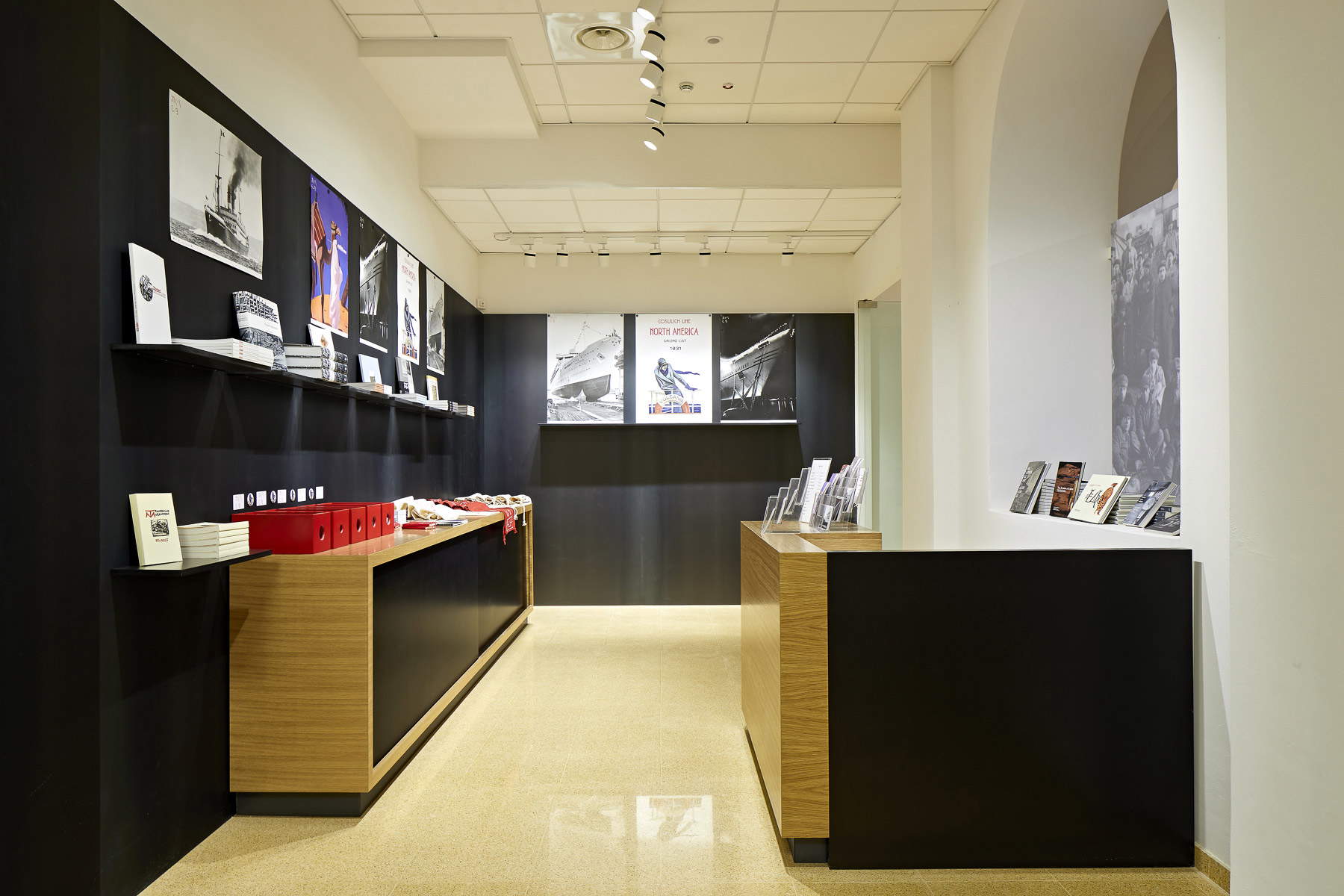 |
| Bookshop of the Shipbuilding Museum. Ph. Credit Massimo Crivellari |
 |
| Monfalcone Shipbuilding Museum, Entrance - Model “MN Julius Caesar, 1951.” Ph. Credit Massimo Crivellari |
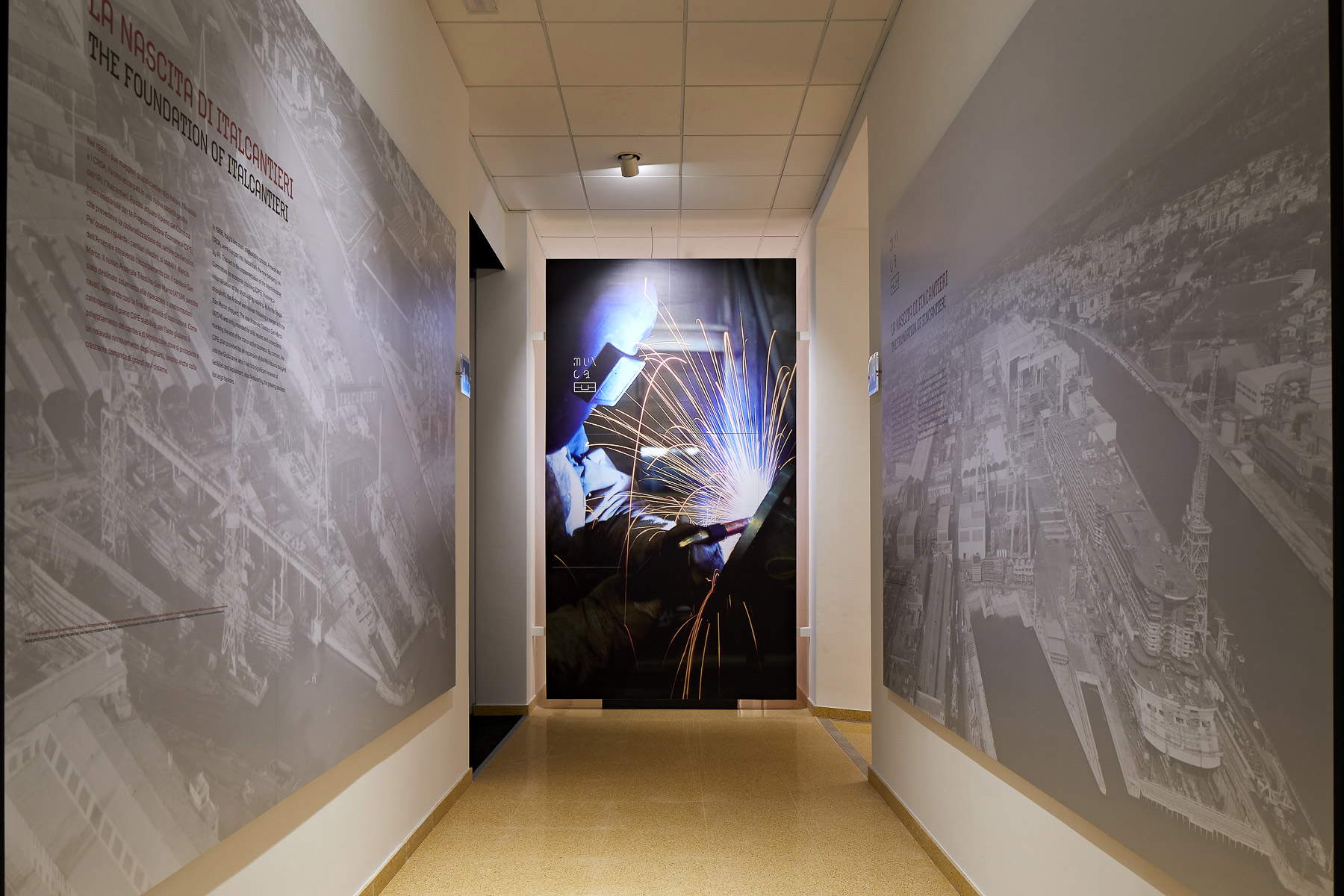 |
| Monfalcone Shipbuilding Museum, Work in the factory. Ph. Credit Massimo Crivellari |
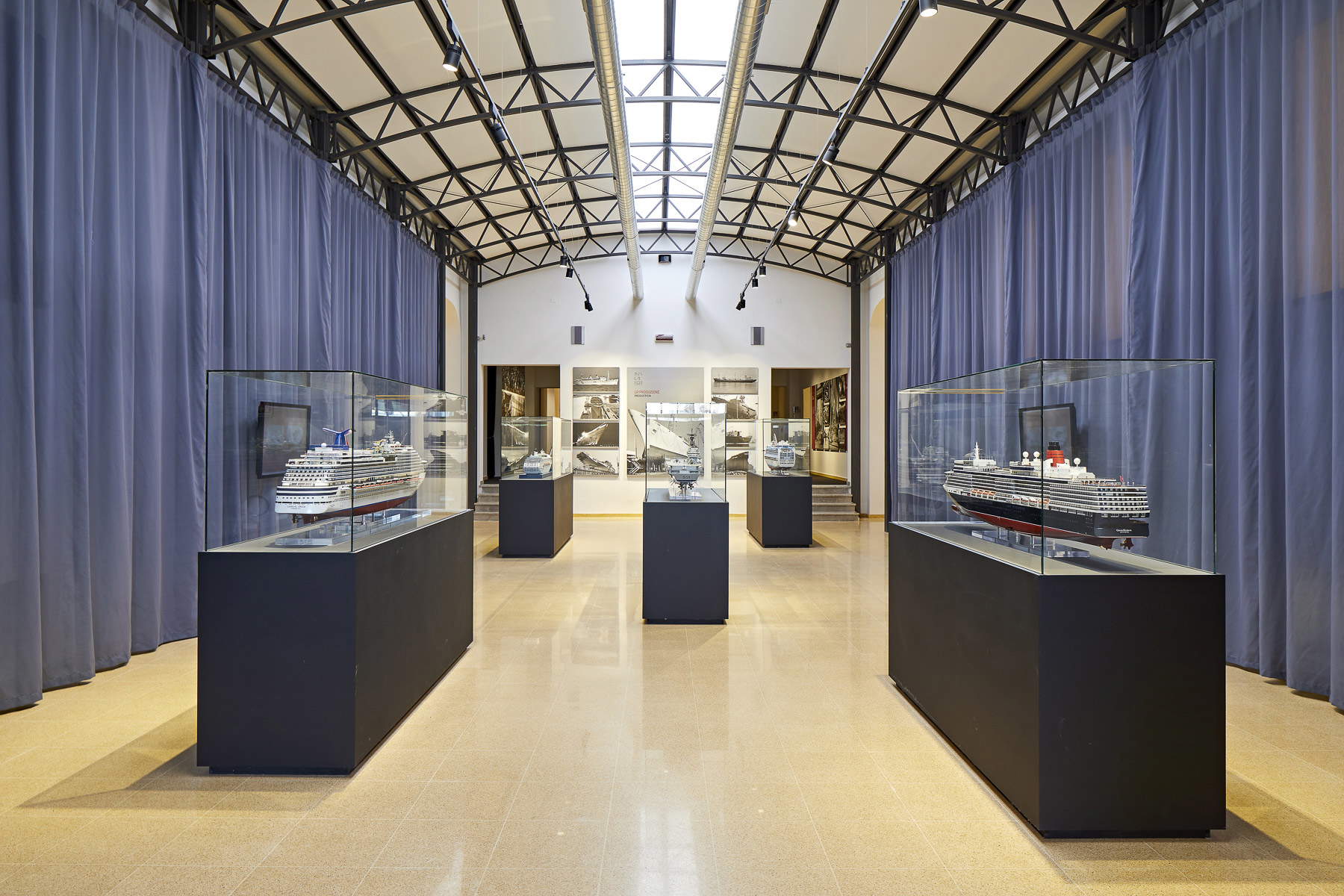 |
| Monfalcone Shipbuilding Museum, The chamber of wonders: ships. Ph. Credit Massimo Crivellari |
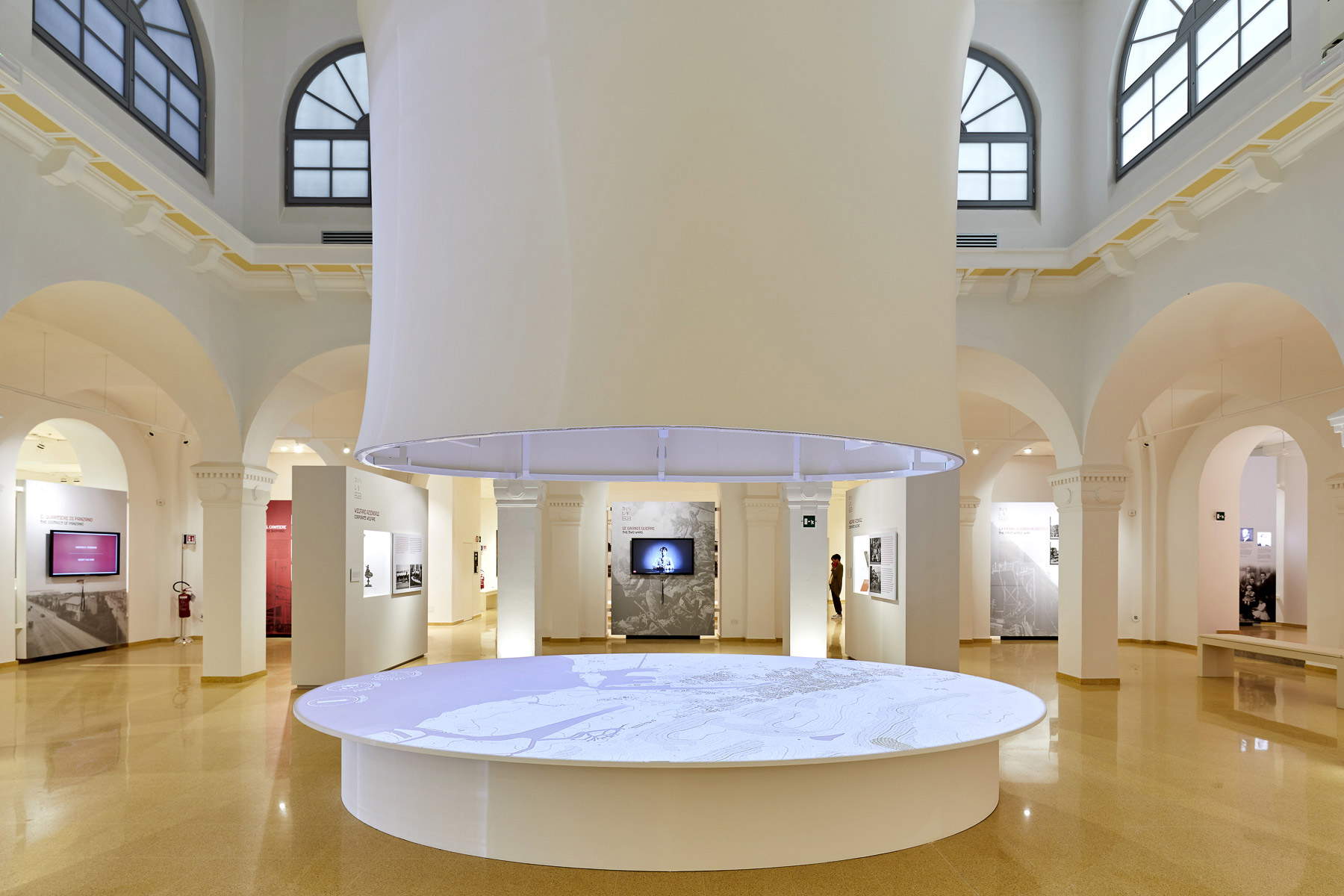 |
| Monfalcone Shipbuilding Museum, Sala Colonne - Refectory room formerly the Workers’ Hotel. Ph. Credit Massimo Crivellari |
Aiming to tell the story of the area and the shipyard, the only example of large shipyards in northeastern Italy, and to create museum services that proposed a strong appreciation of the city’s historical, social and economic roots, the Monfalcone Shipbuilding Museum was opened to the public in 2017, designed by Studio Claudio Nardi of Florence.
Starting with an interactive map that introduces the various stages of the development of the Monfalcone area with respect to the shipyard’s birth in 1908, the museum’s exhibition itinerary unfolds in fourteen rooms. It addresses the business history of the Cosulich family and the theme of work in the ship yard with a look at the development of technology applied to the production process of a ship. Six characters with ties to the shipyard and the area virtually interact with visitors dealing with the significance of shipyard work from six different points of view.
In the so-called "chamber of wonders," visitors find themselves surrounded bylarge models of cruise ships and vintage images; a section is devoted to ship design and ship interior furnishings.
Some rooms can be described as interactive, such as the sensory tunnel, an installation with sound and light effects and multimedia content projected on monitors, which evokes working conditions in the shipyard as visitors pass by; or the crane simulator, which is a reproduction of the interior of the cockpit of one of the cranes used in the shipyard, from where visitors can pilot the crane itself and observe the motor ship Saturnia under construction.
Also, in the room preceding the one where Timmel’s canvases are on display, a multimedia reconstruction of the Panzano Theater has been accomplished.
The MuCa is a fine example of a museum directly linked to its impact on the land: its relationship with the environment in which it is located is inescapable. In fact, the Shipbuilding Museum is part of a diffuse museum that, in addition to the MuCa, includes various outdoor routes in the village of Panzano, including the villas, which constituted the residential quarter inhabited by employees and managers of the shipyard, and the Visitor Center at 28 Pisani Street, an information and exhibition point located since 2011 in the area of the old workshops of the workers’ quarter.
Warning: the translation into English of the original Italian article was created using automatic tools. We undertake to review all articles, but we do not guarantee the total absence of inaccuracies in the translation due to the program. You can find the original by clicking on the ITA button. If you find any mistake,please contact us.